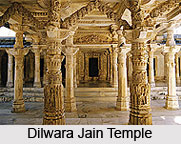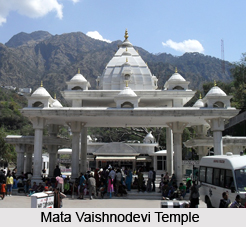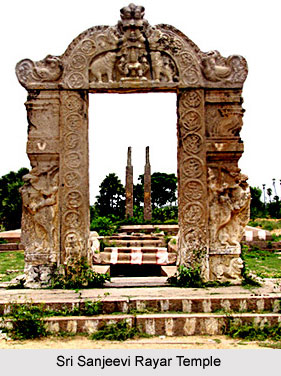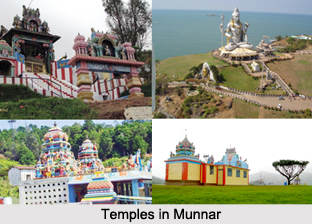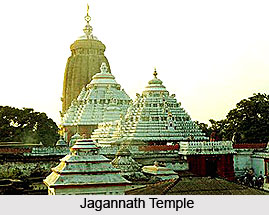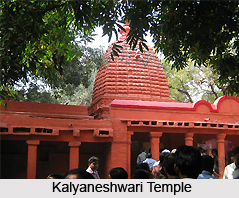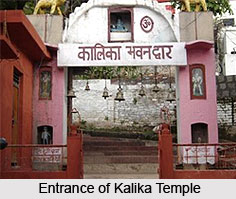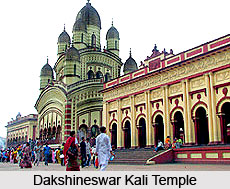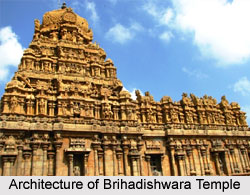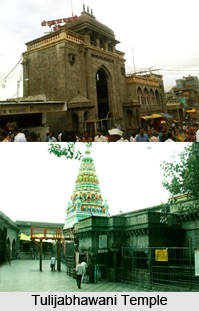 The mighty ruler Shivaji always visited the temple for her blessings. It is rumored that the goddess gifted him with a sword-the Bhawani sword, so that he could always be victorious in his expeditions. The history of the temple has been mentioned in the `skanda-puran`. There lived a saint known as Kardam, after whose death, his wife Anubuti was performing the `shradh` ceremony at the banks of the river Mandakini. She was also praying to Bhawani Mata to look after her infant child, when the demon Kukur tried to disturb her concentration in performing the penance. At that time, Mata Bhawani came to the aid of Anubuti, to slain the demon Kukur. Thereafter, the place came to be known as Tulja Bhawani, but previously, the name of this town was Chinchpur, because of the abundance of tamarind trees. The temple is located on the hill of Bala Ghat, in Osmanabad district, under the Marathwada region.
The mighty ruler Shivaji always visited the temple for her blessings. It is rumored that the goddess gifted him with a sword-the Bhawani sword, so that he could always be victorious in his expeditions. The history of the temple has been mentioned in the `skanda-puran`. There lived a saint known as Kardam, after whose death, his wife Anubuti was performing the `shradh` ceremony at the banks of the river Mandakini. She was also praying to Bhawani Mata to look after her infant child, when the demon Kukur tried to disturb her concentration in performing the penance. At that time, Mata Bhawani came to the aid of Anubuti, to slain the demon Kukur. Thereafter, the place came to be known as Tulja Bhawani, but previously, the name of this town was Chinchpur, because of the abundance of tamarind trees. The temple is located on the hill of Bala Ghat, in Osmanabad district, under the Marathwada region.
The idol of Goddess Tulja Bhawani is a `swayambhu` (self-orinted) idol. Bhawani is worshipped in the form of a three-foot high granite image, with eight arms holding weapons, bearing the head of the slain demon Mahishasura. Bhawani is also known as Tulaja, Turaja, Tvarita and Amba. The main entrance goes by the name of `Sardar Nimbalkar Pravesh Dwar`. There are two main entrances to get to the main temple. One is called the Raja Shahaji Mahadwar, and the other as Rajmata Jijavu main gate. Going through the Sardar Nimbalkar Pravesh Dwar, there is the Markandeya Rishi`s Temple in the right. After getting down through the stairs, comes the main Tulija Temple. The `yagna kund` is in front of this temple. In the floor of the two main gates (Raja Shahaji Mahadwar and Rajmata Jijavu main gate), there are two libraries named, Shree Santh Dnyaneshwar Dharmik Library and Shree Tukaram Dharmik Library. After alighting from the stairs, there is `Gomukh Theerth` on the right side and `Kalakh`, also known as `Kallol Theerth` on the left side. Before the darshan of the Goddess, devotees take a dip here in these theerths. There are also Amruth Kund and Duth temple in the premises. A Siddhi Vinayak temple adorns the left side of the main gate, to the right being the Aadishakti, Aadimata Matangadevi temple respectively. A temple of goddess Annapurna temple is also present in the premises.
Legendary stories naturally surround the temple. A demon, Matanga was wrecking havoc upon the gods and humans. Unable to find any solution, they turned to Lord Brahma for help, and upon His advice turned to Goddess Shakti, who took up the form of a destroyer and powered by the other (Sapta) Maataa Varaahi, Brahmi, Vaishnavi, Kaumaari Indraani and Saambhavi, vanquished the demon Matanga and rendered a peace regime. Legend also states that Bhawani finished another demon that had taken up the disguise of a buffalo (Mahisha), and took shelter on the Yamunachala Hill, which is now home to the Tuljabhawani temple.
Worship is done four times in the temple. The significant festivals in the temple are Gudi Padva in the month of Chaitra, Shriral Sashti, Lalita Panchami, Makara Sankranti and Rathasaptami. The deity is taken out in procession on Tuesdays. Navratri is also celebrated with much pomp and dignity, which culminates in Vijaya Dashami. Shri Tulja Bhavani Temple Trust (STBT) maintains the temple. The trust comprises of a number of members, Osmanabad District Collector being the main trustee.












